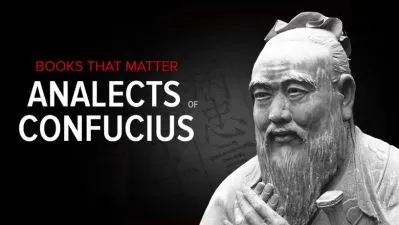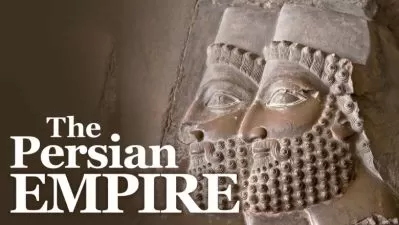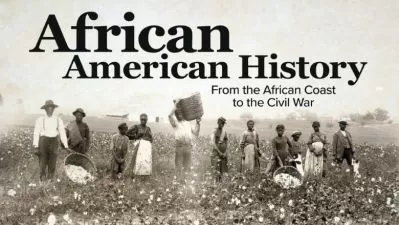The Barbarian Empires of the Steppes
Kenneth W. Harl
18:26:46
Description
Attila the Hun and Genghis Khan loom large in the popular consciousness as two of history's most fearsome warrior-leaders. Accounts of the ruthless conquests of these men called “The Scourge of God” and “Universal Lord” both fascinate and repel. Yet few people today are aware of their place in a succession of nomadic warriors who used campaigns of terror to sweep across the Eurasian steppes, toppling empires and seizing control of civilizations.
From antiquity through the Middle Ages, nomadic warriors repeatedly emerged from the steppes, exerting direct and indirect pressure on sedentary populations and causing a domino effect of displacement and cultural exchange.
It's a part of history that's often overlooked, but to have an accurate view of how civilization evolved, it's important to have a clear understanding of who these people were and the magnitude of their impact on the world.
Consider these turning points set into motion by steppe nomads, each of which reverberates still:
- The fall of the Roman Empire can be blamed at least in part on the Huns.
- Christians of Asia Minor converted to Islam after the clergy fled the nomadic Turks.
- The Mongol sack of Baghdad destroyed the city and its role in the Muslim world.
- China's modern-day Great Wall was constructed in response to the humiliation of Mongol rule.
- The spread of Buddhism and trade followed the Silk Road, which allowed cultural exchange between nomads and settled zones across Eurasia.
- Russia's preemptive expansion into the northern regions was a reaction to the horror of being conquered by Mongols.
In controlling massive swaths of land and forcing wave after wave of displaced populations to make contact, these invaders facilitated a transfer of language, religion, culture, trade, weaponry, and technology that affects us to this day. Their military technology and tactics in particular—from stirrups and saddles to gunpowder and the strategic use of terror—would be adopted by civilizations on the edges of the Eurasian landmass, as well as by subsequent civilizations.
Now you can open a window on a part of ancient and medieval history you may not have realized existed in the 36 gripping lectures of The Barbarian Empires of the Steppes with veteran Great Courses Professor Kenneth W. Harl. This award-winning educator of classical and Byzantine history at Tulane University guides you through some 6,000 miles and 6,000 years to investigate how the nomadic peoples of the Eurasian steppes played decisive roles in history. You'll discover how a series of groups—from the Sacae and the Sarmatians to the infamous Huns and Mongols—pushed ever westward, coming into contact with the Roman Empire, Han China, and distant cultures from Iraq to India paving the way for our globalized world.
An Epic Thousands of Years in the Making
Opening in antiquity on the western steppes known as the Pontic-Caspian, this course first introduces you to the Indo-Europeans as it illuminates how the harsh environment of the steppes led nomadic populations to develop a way of life hearty in hunting and war.
You'll then travel to early China to explore the Xiongnu, who were so feared by the Han Chinese that their leader was lavished with a tribute system know as “the five baits,” featuring the promise of marriage to a Chinese princess.
As you progress to the Middle Ages, you'll take a detailed look at powerful Turkish-speaking nomads who brought Islam to the peoples of the steppes. Finally, you'll delve into the Mongol Empire starting with the life and career of Temujin, as Genghis Khan was known before he was declared Universal Lord.
Along the way, you'll
- meet a cavalcade of fascinating figures such as Tamerlane, known as the “Prince of Destruction,” and Harun ar-Rashid, the caliph famously known from Tales of 1001 Arabian Nights;
- trace the dispersion of Indo-European speakers across Europe, western Eurasia, and India, while examining the linguistic legacy of this migration;
- encounter political confederations of nomads capable of challenging the great urban literate civilizations of Eurasia;
- witness the creation of an early global economy and struggles to control trade along the legendary Silk Road; and
- learn why Nestorian Christianity, Manichaeism, Zoroastrianism, Judaism, and, most of all, Buddhism, were appealing to steppe nomads.
The Barbarian Empires of the Steppes is also filled with riveting accounts of battles fought by hordes of horse archers and compelling stories, such as Attila's marriage proposal from the bored and scandalous Empress Honoria in A.D. 450. You'll be enthralled as you listen to how her offer and his demand-laden acceptance—which was rejected by her brother Valentinian, the Roman emperor—led him to amass the “barbarian army to end all barbarian armies” and ruthlessly ravage western Europe.
A Portrait of Barbarians beyond Brutality
With Professor Harl's guidance, you'll look past the stereotyped images of the barbarians so you can develop a true comprehension of the central roles these people played in history by linking the settled civilizations along the Tigris-Euphrates, Nile, Indus, and Yellow rivers.
He delivers a wealth of information contrary to the popular notion that the region's ancient and early modern peoples were culturally backward. For example, you'll learn how
- the domestication of the horse and the invention of light chariots by the Indo-Europeans gave the nomads a military edge and allowed for stock raising and the mobility of families;
- the Scythians ushered in an era of cavalry warfare by perfecting the saddle;
- Islamic Turks maintained a policy of protection toward Christians and Jews;
- Genghis Khan used Chinese engineers and mapmakers to help his army conquer the Jin Empire and Transoxiana; and
- Turkish rulers and the conqueror Tamerlane adopted the distinct architecture originated by the Samanid emirs, Islamizing the cities of Transoxiana.
You may also be surprised to learn of the relationships some of these tribes had with the Greek world and the great Roman and Persian empires, or to see how steppe nomads even built great states within the wider Mediterranean world. This is particularly true of the Parthians, who created the first nomadic empire in the Near East.
Of course, these conquerors did use extreme violence, and these lectures recount shocking atrocities, including accounts of leaders being wrapped in carpets and trampled by horses, combatants being interred in walls, and at least one official having silver poured down his throat. More than once, you'll witness a defeated leader's skull being used as a drinking goblet, as was the nomadic tradition.
The Epitome of All Steppe Empires
In the final third of the course, you'll discover how the Mongols amassed a world empire that made the 13th century the Mongol century. Professor Harl leaves no doubt as to why they were exceptional in terms of logistics, military organization, vision of empire, and knowledge of the world, surpassing all previous nomadic peoples who had constructed empires on or adjacent to the steppes.
Without minimizing the horrendous costs on the subjected people, he leads you through the long-range benefits of the Mongol conquests, with an analysis of the cultural exchange and prosperity that resulted from the Mongol Peace. Here, you'll see how the Mongol kaghans set up courts, promoted trade along the Silk Road, introduced gunpowder to the Europeans, and promoted policies favorable to the spread of Buddhism.
An Unparalleled Learning Opportunity
A course this ambitious could only be possible with a skilled lecturer like Professor Harl, who pored over hundreds of original sources in synthesizing this material into a clear and powerful presentation. With so many years, so many miles, so many personalities, and so many civilizations covered so comprehensively, this course is truly unlike any you'll find.
Aided by detailed maps and schematics of military engagements, these often neglected areas of history come alive in The Barbarian Empires of the Steppes. Whether your interest lies in Western or Eastern civilization, this course will provide you with startling new insights on how the world was shaped and introduce you to cultures and empires you've likely never encountered.
More details
User Reviews
Rating
Kenneth W. Harl
Instructor's Courses
The Great Courses
View courses The Great Courses- language english
- Training sessions 36
- duration 18:26:46
- Release Date 2023/05/11

















